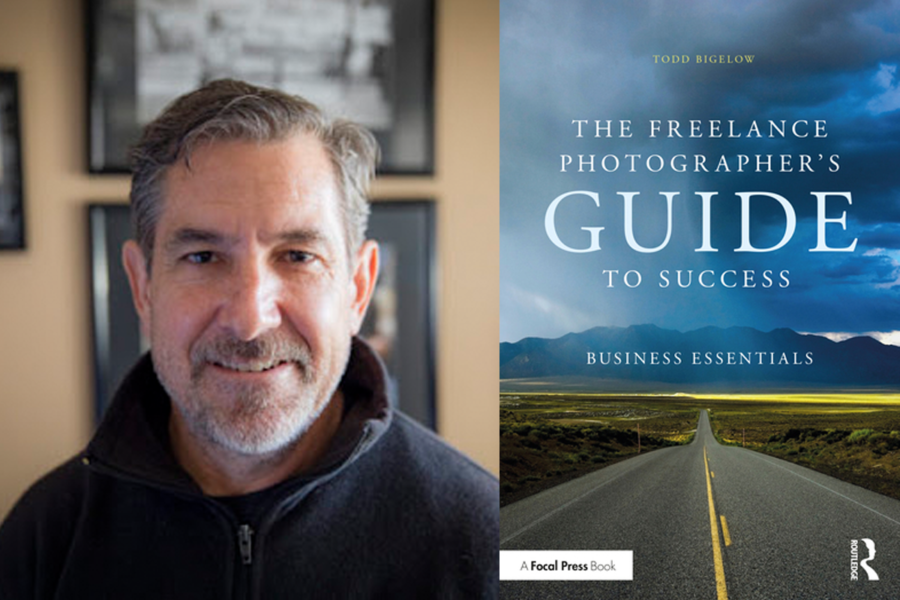Share
Photo Business Advice That’s “Boring as Hell,” But Vital
“Let’s be real, man,” Todd Bigelow, the author of the newly published book The Freelance Photographer’s Guide To Success: Business Essentia...

“Let’s be real, man,” Todd Bigelow, the author of the newly published book The Freelance Photographer’s Guide To Success: Business Essentials, told me. “The topics that we talk about that are so vital to being successful and running a freelance business are just boring as hell.”
In this episode of the PhotoShelter podcast, Vision Slightly Blurred, Allen Murabayashi interviews photographer Todd Bigelow, the author of the recently published book “The Freelance Photographer’s Guide to Success: Business Essentials.”
For nearly a decade of his 30-year career, the photojournalist and editorial photographer has been lecturing on business topics as they relate to the world of freelance photography. Initially, he worried about finding an audience, but he’s noticed an uptick in interest in the past few years. The seismic shift from staff photographer jobs to freelance has undoubtedly forced many photographers to develop their business acumen alongside their creative talent.
His book is the outgrowth of both his work as an Adjunct Professor of Photography and Photojournalism at his alma mater, California State University, Northridge, as well as his The Business of Photography Workshop. “I had people asking me for anything that I could provide to them subsequent to the workshop,” explained Bigelow. Eventually, he realized that excepted passages from disparate sources wasn’t enough, so during the pandemic, he put pen to paper.
“I wrote this not as a textbook and in a deliberate manner to avoid the appearance that I have ‘the answers’ to success,” he e-mailed me. “There are no ‘the answers.’ The concept of the book is to share what works for me and therefore everyone can hopefully take what they feel is useful, discard what is useless to them and add their own.”
One of Bigelow’s hot button issue is predatory work-for-hire (WFH) contracts, which give a hiring entity the sole possession of an image’s copyright. The WFH trend has unfortunately become commonplace with major media outlets (e.g. The New York Times, AP, AFP, Reuters), and freelance photographers often feel compelled to sign. But even with WFH, Bigelow encourages and educates rather than admonishing those who might need to work to pay rent.
“I encourage every photographer to do what they need to do to sustain themselves as a freelancer,” says photographer and educator Todd Bigelow. But his advice also comes with a caveat. “What’s I’ve always advocated for is being keenly aware of what you are surrendering [with WFH].” Photographers, especially younger photographers at the beginning of a career, often don’t understand how a short-term paycheck can amount to thousand of dollars of lost revenue from secondary use down the line.
But lost revenue isn’t the only consideration. “You’re signing away all those rights to a third party to use your work in any way, shape or form. That to me, especially with a photojournalism background, is deeply disturbing,” says Bigelow. He points out some of the same people advocating for consent in photojournalism are also signing WFH that cede control to a publisher who could sell its assets to the highest bidder without any consideration for the subject of a photo.
As he’s grown his freelance business, Bigelow has intentionally diversified his income sources. Some 10% of his annual revenue is derived from pursuing copyright infringement – a figure that might surprise some photographers. “I realized that a lot of the smaller licensing fees that I would get from particular publications and websites were pretty much gone,” he said. “I started to look into where my work was appearing without my authorization. When I saw how rampant it was…if someone keeps breaking into my store and stealing all my products, don’t I have a right to do something to recover those items?”
Another chunk of revenue comes from secondary sales, but his best-selling images aren’t his award winners or celebrity portraits. One of his images from a Sports Illustrated assignment netted him 7-8 times the original assignment fee “not because it was a great image,” explained Bigelow. “It’s because somebody needed that image. I had no idea at the time that I made the image that anybody’s gonna need that image.” It’s yet another datapoint from his own experience that validates his stance against WFH.
The accessibility of digital photography has allowed many new, talented entrants into the industry in the past decade. But sustaining a viable freelance business isn’t as easy as pressing the shutter button. “We need to do more to better prepare them,” advised Bigelow. “And just like any other issue, raise the awareness so that they can make informed decisions.”


